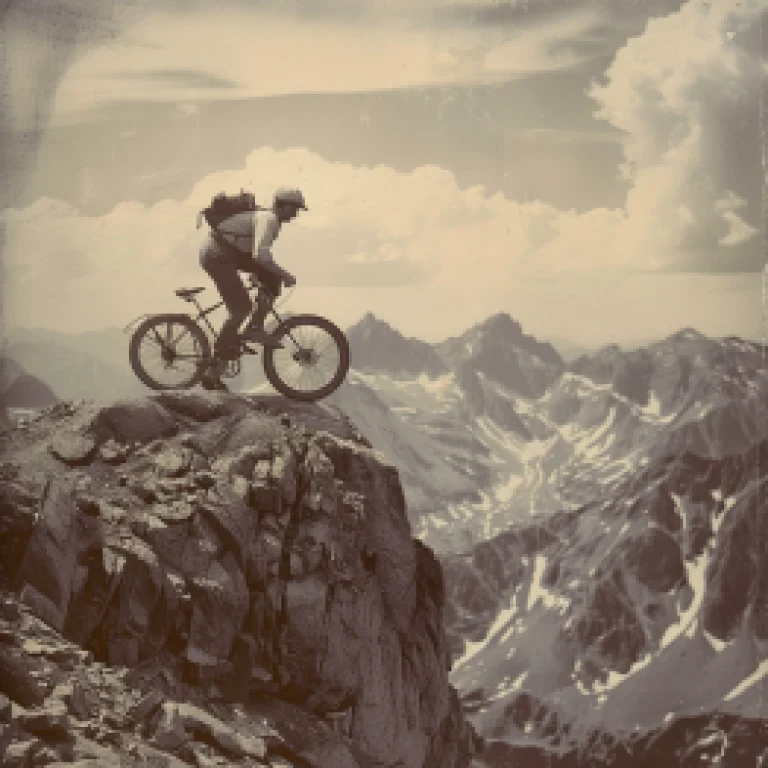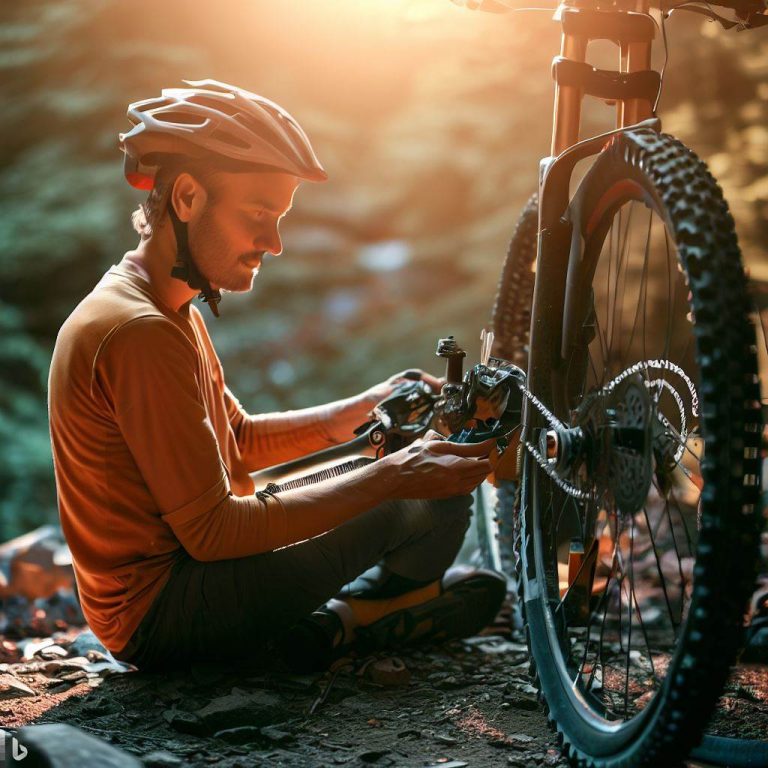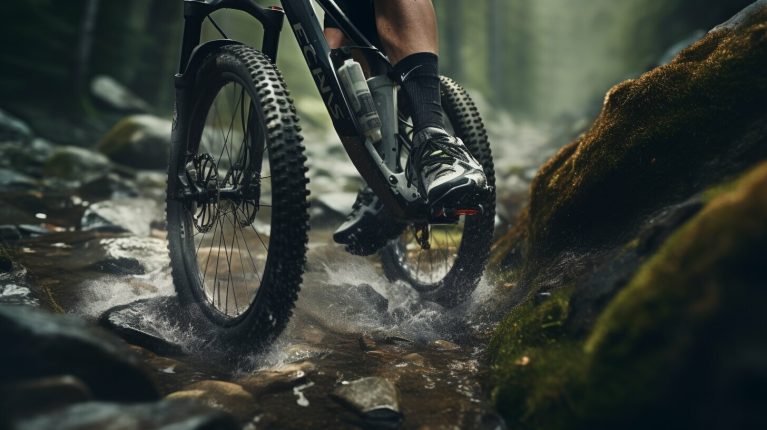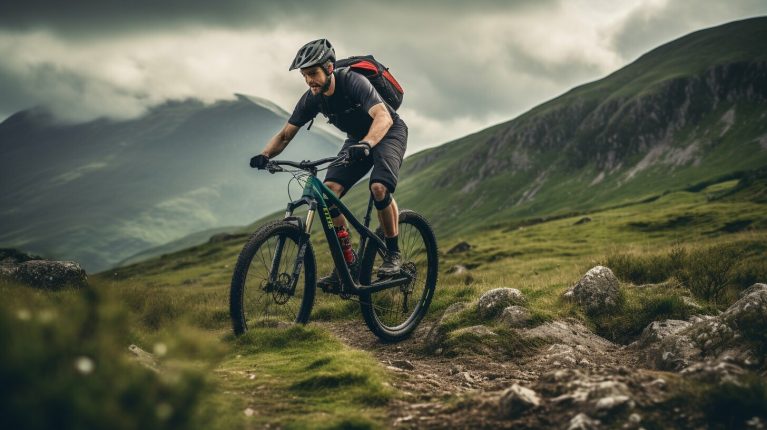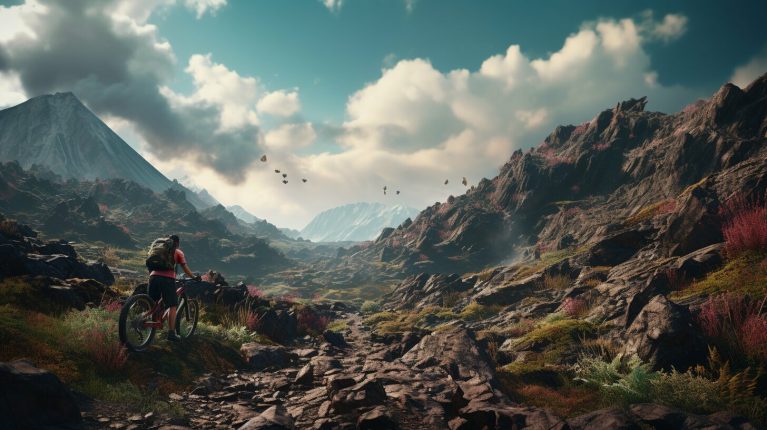So if you’re looking for an adventurel; whilst keeping fit all at the same time, there is nothing better than mounting bike.
From a simple leisurely ride around the block to a more hardcore off-road by biking. There is something for everyone including basic back trails right up to advanced levels.
ideally, if you are keen to make biking your passion but only just starting out there’s a few things ideally you need to learn first.
From having the right kind of gear to learning the skills you need to stay safe and make sure you get the most out of it at each adventure, don’t worry if it may seem a bit much, we have you covered and this article is all about teaching you the basics so you can get up and running with all that you need.
Choosing the Right Mountain Bike
So the first step is the obvious one you first need a bike. now obviously there’s different types of bikes, but as this is a mountain bike website we will focus on that.
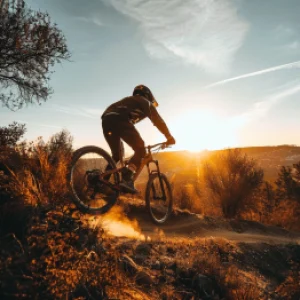 So you have Cross Country, Trail, Enduro, and Downhill to name a few. each one offers a different type and style of riding.
So you have Cross Country, Trail, Enduro, and Downhill to name a few. each one offers a different type and style of riding.
before you put yourself in front of a selection of bikes do take into account things ike the frame size, wheel size, and suspension ( would you like it or not).
With this in mind nothing beats anything more than actually sitting on the bike, getting a feel of it, often your gut reaction are your instinct will tell you if that bike is what you are looking for.
Whilst in Any Bike Shop always ask for advice. right bike is an obvious step, but is probably the most important, I’ve always preferred to choose a bike which feels a part of me rather than something that I riding.
| Bike Type | Riding Style | Key Considerations | Buying Tips |
|---|---|---|---|
| Cross Country | Long distances, Climbing, Descending | Lightweight frame. Smaller wheels for agility. Suspension: Front only. | Seek agility and speed. Ideal for racing and trail riding. |
| Trail | Versatile, all-around use | Balanced frame size. Medium wheels for versatility. Full suspension. | Look for a good mix of uphill and downhill capability. |
| Enduro | Downhill sections, Technical trails | Durable frame. Larger wheels for stability. Full suspension, more travel. | Choose for steep, technical descents. |
| Downhill | Steep, technical descents | Very durable frame. Largest wheels for stability. Full suspension, maximum travel. | Prioritize stability at high speeds and comfort in aggressive positions. |
| General Tips | N/A | Frame Size: Match your height. Wheel Size: Based on terrain. Suspension: Based on terrain. | Test ride for a personal feel. Trust your instinct. Seek advice in bike shops. |
Essential Gear and Equipment for Beginners
| Item | Description | Why It’s Essential |
|---|---|---|
| Helmet | Proper fit, adequate ventilation | Protects your head in case of falls |
| Gloves | Grip improvement, hand protection | Prevents blisters and protects during falls |
| Hydration Pack | Carries water and essentials | Keeps you hydrated on long rides |
| Multi-Tool | Includes basic repair tools | For on-the-trail adjustments and repairs |
When it comes to mountain biking Gear and equipment you can literally spend 100 if not 1000 of pounds on things you do need, don’t need and everything in between.
But what we are just going to talk about here is the essentials of what all Bikers should at least start with.
It’s no good in having all the gear but no idea, it’s far better to just have what you need to make your adventure a happy one but above all a safe one.
So Let’s Begin with the basic essentials of mounting bike riding:
Helmet: Importance of a Proper Fit Your helmet is your most crucial piece of safety gear. . Dont just buy one because it looks nice! Make sure it fits snugly but comfortably on your head, and that it doesn’t wobble or pinch.
Use this video to make sure you remain safe:
Protective Gear: Gloves, Knee Pads, Elbow Pads Mountain biking can be as rough are as easy as you want it to be, and falls are part of the learning process.
Even if you are legally cycling it is always wise to protect your hands, knees, and elbows with the right gear, certainly is these parts of the body where you will tend to fall on.
Gloves also improve your grip on the handlebars, especially in wet weather, which makes it another added bonus through always keep them on.
Clothing: Breathable and Weather-Appropriate Attire Wear clothes that let your skin breathe. you may be tempted to dress up with many layers, especially if you are going out on a cool or cold day. What’s always remember one sure moving your body will warm up quite quickly.
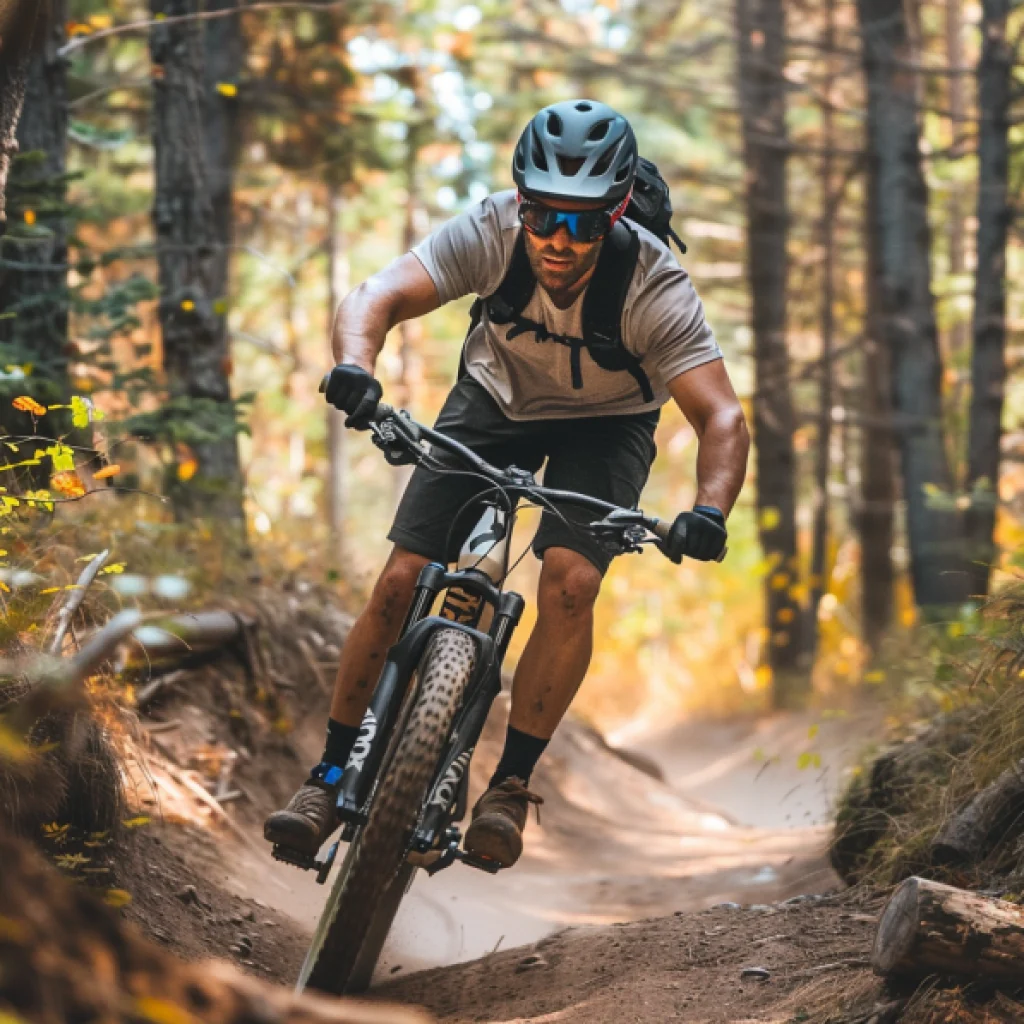
Depending on the weather, layer up or down. Always check the forecast before heading out and be prepared for changes in weather. Comfortable, weather-appropriate clothing will make your ride much more enjoyable.
Tools and Accessories: Repair Kit, Hydration Pack, Multi-Tool A basic repair kit can save your ride. Include a multi-tool for adjustments, a spare tube, and a pump or CO2 inflator. Don’t forget a hydration pack or water bottle to stay hydrated, especially on longer rides.
oh and don’t forget your snacks and water, especially on those hot days!
Basic Mountain Biking Skills
Skill Development Plan
| Skill | Practice Tips | Progress Indicator |
|---|---|---|
| Body Position | Practice standing and moving weight on the bike | Increased control on varied terrain |
| Braking | Practice modulating brake pressure | Smooth, controlled stops |
| Shifting Gears | Practice shifting before terrain changes | Smooth transitions, maintaining cadence |
| Climbing | Practice shifting to lower gears, lean forward | Efficient climbs without fatigue |
| Descending | Shift weight back, choose line early | Controlled descents, reduced braking |
Body Position: Balance and Control on Varied Terrain Your body position is key to handling your bike. Keep your body relaxed and your weight centered over the bike. On flat ground, maintain a slight bend in your elbows and knees. When the terrain gets rough, stand up slightly on the pedals to absorb bumps.
Braking: Techniques for Safe Stopping Braking isn’t just about stopping; it’s about controlling your speed. Use both brakes evenly, and learn to even them with pressure to avoid skidding.
If it’s a new bike, learn how your braking feels as priority.

Shifting Gears: How and When to Change Gears Shifting gears helps you maintain a comfortable pedaling speed (cadence). Shift to a lower gear before you start climbing and a higher gear for flat or downhill sections.
Climbing and Descending: Tips for Efficiency and Safety For climbing, shift to a lower gear and lean forward to keep your weight over the front wheel. This improves traction and makes pedaling easier. When descending, shift your weight back to prevent going over the handlebars. Look ahead, choose your line early, and use controlled braking to manage your speed.
Don’t go to fast, especially if your new, you can always build more sped and confidence over time, aswell as learning the trial, or road so you know what to expect.
Trail Etiquette and Safety
| Rule | Description | Importance |
|---|---|---|
| Right of Way | Yield to uphill riders and hikers | Prevents accidents and maintains flow |
| Trail Preservation | Stick to marked paths, avoid riding in mud | Protects the environment and trail conditions |
| Safety Tips | Ride within limits, use a trail map | Ensures personal safety and respect for others |
- Right of Way: Knowing When to Yield
- Always be aware of your surroundings and who has the right of way. If you’re a new mountain bike rider it is only to be expected that you may be slower than other bikers on the trail. do always give way when encountering other bikers, and if you are overtaking other bikers make sure to our ways communicate when passing.
- Trail Preservation: Sticking to Marked Paths, Leaving No Trace
- One of the best things about mountain bike riding is the beautiful surroundings and scenery that you will Encounter. to keep it looking this way and in pristine condition, always stick to the tracks don’t try and create your own and avoid riding on Muddy Trails to prevent damage. basically, try and leave the track in the same way you found it.
- Safety Tips: Riding Within Your Limits, Using a Trail Map
- this is without a doubt the most important bit of advice for a new bikers, cycle within your limits, don’t push yourself too hard, at the very least you probably have and had much experience are you may not get out on the bike enough to be able to do more intermediate or advanced levels of mounting biking. stay safe and keep within your limits, it’s far better to have a nice day out a slow pace but go home safely
Finding Trails and Joining the Community
- Finding Trails
- Use online resources, apps, or local biking shops to find trails suited to your skill level. from green and blue up to the more advanced red and black trails there’s something out there for everybody.
- Look for trails with clear descriptions and difficulty ratings to ensure they’re appropriate for you.
- Websites and apps like Trailforks and MTB Project provide detailed information, including trail difficulty, length, and elevation gain. Look for trails labeled as “green” or “beginner-friendly” to ensure they’re suitable for newcomers.
- Joining the Community
- Joining a local mountain biking group or club can enhance your riding experience. It’s a great way to meet fellow bikers, learn new skills, and discover new trails. Many communities hold regular rides or events, which can be fun and educational.
- Benefits of Joining a Local Mountain Biking Group or Club Joining a local mountain biking group or club can significantly enhance your riding experience. Here are a few benefits:
- Guidance and Support: More experienced riders can offer tips and advice, helping you improve faster.
- Safety in Numbers: Riding with a group is generally safer, especially on remote trails.
- Social Connections: Mountain biking groups are a great way to meet people with similar interests.
- Organized Rides: Many groups organize rides for different skill levels, including beginners.
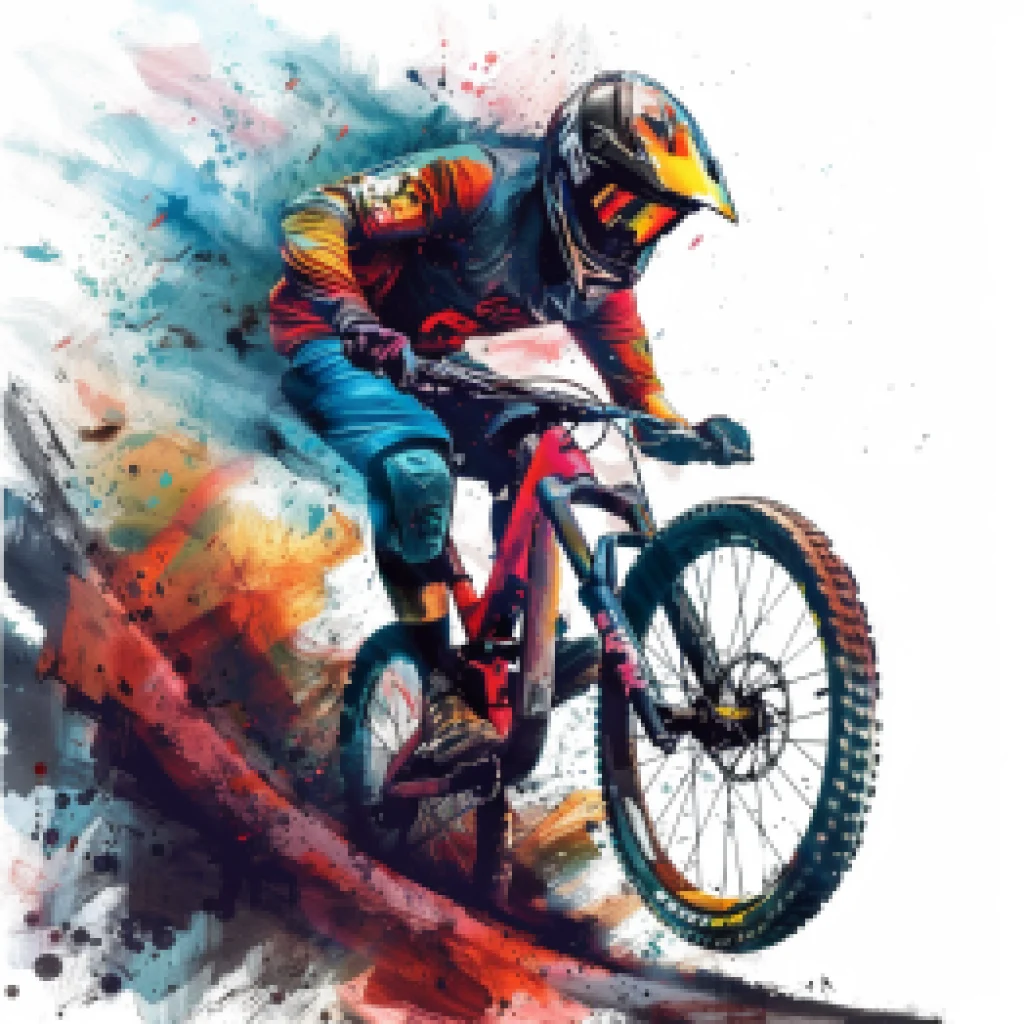
Checking Your Bike: Pre-Ride Maintenance Checklist:
>>Click here if you would like a Printable and Downloadable copy of this Checklist<<
